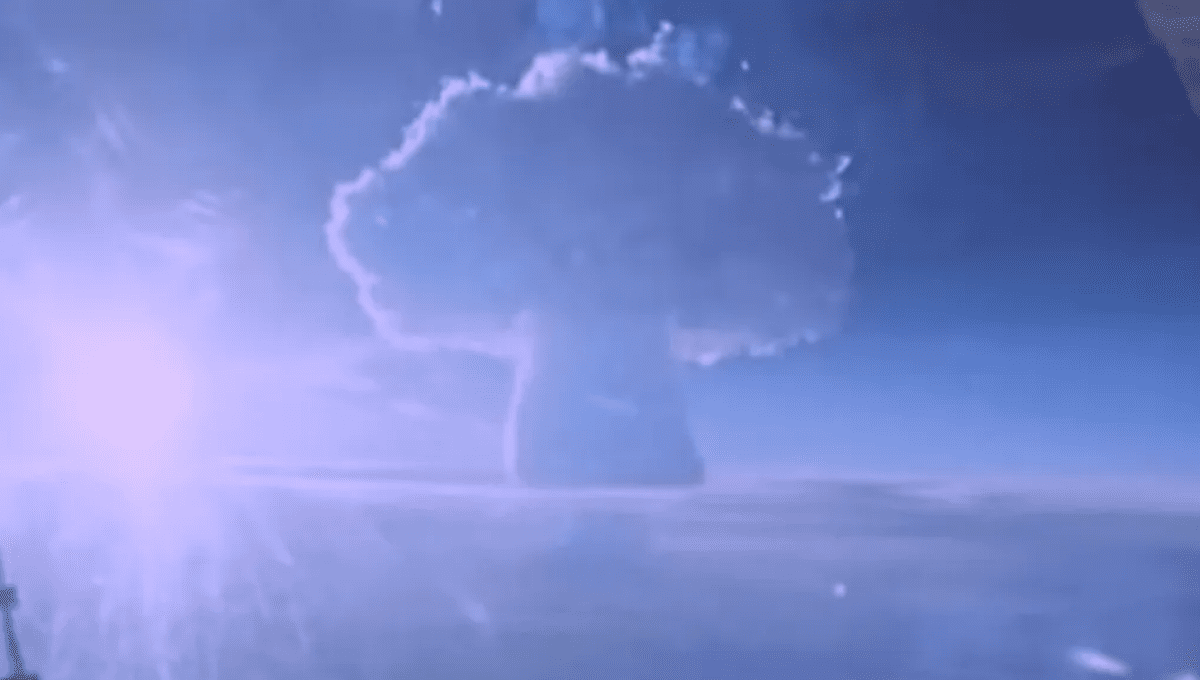
On the morning of October 30, 1961, the Soviet Union carried out the Tsar Bomba test, a hydrogen bomb that was the most powerful nuclear weapon ever created and tested.
The Tsar Bomba packed a punch of over 50 megatons, which is the equivalent of 50 million tons of conventional explosives. That’s 10 times more powerful than all the munitions expended during World War Two and over 1,500 times the force of the atomic bombs dropped on Hiroshima and Nagasaki combined.
Known officially as the Soviet RDS-220, the Tsar Bomba roughly translates as “the King of Bombs.” It also had a number of other nicknames and code names, including Big Ivan, Project 7000, JOE 111, or Kuzka’s mother (a Russian expression that essentially means “we’ll teach you a lesson in a brutal way”).
Back in 2020, Russia’s Rosatom State Atomic Energy Corporation released never-before-seen video footage of the test, although the video has since been removed from YouTube. You can see a clip of it in the video player below.
The bomb was dropped above the cape of Severny Island on the Novaya Zemlya archipelago in northern Russia. It was so powerful it had to be dropped from an airplane with a parachute attached to ensure the crew had enough time to evade the ensuing blast. Even then, it was uncertain whether the crew would survive.
In a flash of white light, the bomb created a fireball 8 kilometers (5 miles) wide, eventually culminating in a mushroom cloud that soared to 64 kilometers (40 miles) high.
“The clouds beneath the aircraft and in the distance were lit up by the powerful flash,” recalls a Soviet cameraman who observed the explosion. “The sea of light spread under the hatch and even clouds began to glow and became transparent. At that moment, our aircraft emerged from between two cloud layers and down below in the gap a huge bright orange ball was emerging.”
“The ball was powerful and arrogant like Jupiter. Slowly and silently it crept upwards. Having broken through the thick layer of clouds it kept growing. It seemed to suck the whole earth into it,” they added.
“The spectacle was fantastic, unreal, supernatural.”
Unbelievably, the bomb was dropped just 54 kilometers (34 miles) from the supposedly inhabited town of Severny. It was said that all of the wooden and brick buildings in the town were instantly obliterated. The number of human casualties has never been revealed. It was even reported that windows were smashed in Norway and Finland. For all the blast’s might though, it produced surprisingly little fallout thanks to the design of the bomb.
The Tsar Bomba was effectively too big and impractical to ever use. In fact, the startling scale of the explosion is often cited as one of the driving forces for the Partial Nuclear Test Ban Treaty in 1963, in which the US and USSR agreed to stop atomic bomb tests in the atmosphere, outer space, and underwater.
Unfortunately, these monstrous weapons are still been collected around the world. There were approximately 12,700 nuclear warheads worldwide as of March 2022. Almost 90 percent of them belong to two countries – the United States and Russia – while the remaining 1,200 or so are in the hands of the UK, France, China, India, Pakistan, Israel, and North Korea.
Source Link: Tsar Bomba: The Biggest Nuclear Bomb Ever Detonated